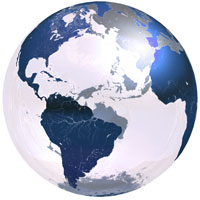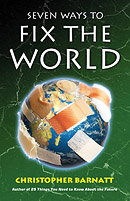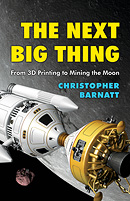 |
|
|
|
On this page:
Transhumanism The Singularity Thirtysomething Civilization The Second Digital Revolution The Five Facets of Reality Crossing the Fourth Discontinuity The Global Hardware Platform Future Mindsets
Ideas are what make us human. Granted, whether or not an ant or a horse or a blue whale has the ability to imagine other times and places -- let alone to use such inner visions as mental tools -- we will probably never know. However, there is little doubt that the human ability to work with concepts in the realm of the mind's eye is what has and will continue to allow us to survive, to progress, and to evolve. "Mindsets" are ideas and possibly even entire belief systems that help us to cope with the world, to navigate complex situations, and to grasp the big picture. To put it another way, a mindset may be thought of as a mental tool that enables us to cut out all of the noise and apparent randomness of our environment, and which in doing so allows us to see the forest rather than a gathering of individual trees. TranshumanismTranshumanism represents the view that we should take a proactive role in upgrading the human species. In other words, "transhumanists" believe that a proactive stance ought to be taken in furthering human evolution. For more information, please see the transhumanism page. The SingularityThe Singularity is a future event horizon that we may be approaching due to exponential technological progress. The idea is often associated with the development of beyond human intelligence, as well as bleeding-edge scientific developments including synthetic biology and nanotechnology. For more information, please see the Singularity page. The Second Digital RevolutionFrom around 1980 to the year 2000, the "First Digital Revolution" took place as a mass digitization occurred with a wide variety of media increasingly being encoded into the binary world of cyberspace. However, the idea behind today's resultant "Second Digital Revolution" is that we are now in a more mature phase of digital technology development in which the focus is far more on the "atomization" of digital content back into the real world. For a far more detailed explanation of the Second Digital Revolution and its development, please see the Second Digital Revolution page. Thirtysomething CivilizationIndustrial civilization is part of the natural world. As such it may also be subject to a natural cycle of rise and fall. In this context, industrial civilization is now perhaps somewhere in its thirties -- still thriving, but also at the point of having to learn to increasingly leverage its wisdom in the face of diminishing physical opportunity. For more on this idea, please see my Thirtysomething Civilization video. The Five Facets of RealityThe Five Facets of Reality is a conceptual framework to assist in the study of radical technological, social and cultural transition. The model divides human history into "the past", "the present" and "the future", and then seeks to explore changes in five key "facets" of human and organizational existence across these time periods. For a more detailed explanation of this future mindset tool, please see the Five Facets of Reality page. Crossing the Fourth DiscontinuityIn 1993 Professor Bruce Mazlish wrote a great book called The Fourth Discontinuity. This suggested that across history human beings have had to break through barriers or "discontinuties" that have separated humanity from the rest of creation. Mazlish's particular proposition is that we are now starting to cross the "Fourth Discontinuity" that used to clearly distinguish human beings from machines. For more information see the Crossing the Fourth Discontinuity page. The Global Hardware PlatformThe idea behind the global hardware platform is to try and think of all computers and network technologies as comprising a single, interconnected global computing machine. For a more detailed explanation, please see the Global Hardware Platform page. |
 "The empires of the future are the empires of the mind" Winston Churchill. RELATED VIDEOS The New Narrative Singularity or Decline? Thirtysomething Civilization Playing at God?   |
|
|